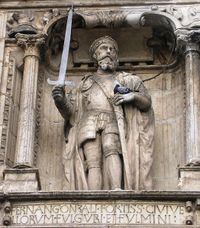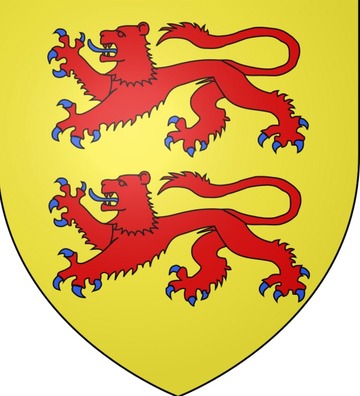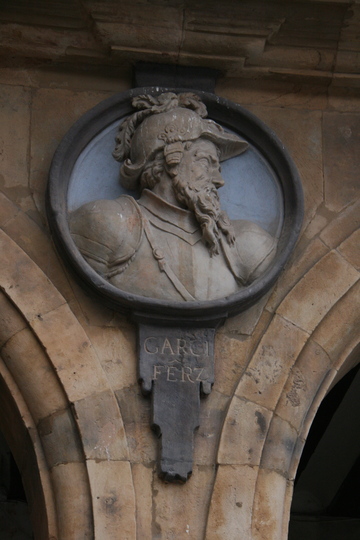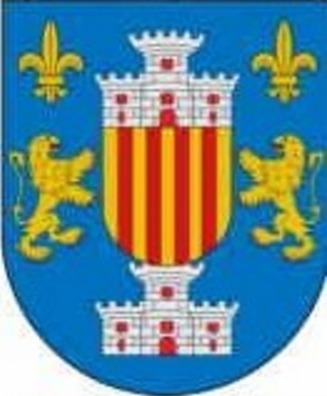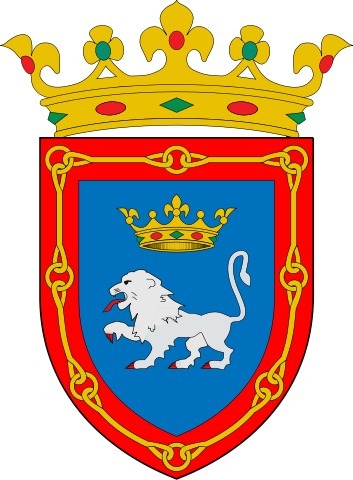maximum test » Sancho I 'el de los Buenos Fueros' García de Castilla conde de Castilla (965-1017)
Persönliche Daten Sancho I 'el de los Buenos Fueros' García de Castilla conde de Castilla
- Er wurde geboren im Jahr 965 in Castile, Spain.
- Er wurde getauft im Jahr 1006 in Count of, Castile.
- Alternative: Er wurde getauft im Jahr 1006 in Count of, Castile.
- Alternative: Er wurde getauft im Jahr 1006 in Count of, Castile.
- Berufe:
- Greve.
- Conde Soberano de Castela.
- Er ist verstorben am 5. Februar 1017 in Castile, Spain, er war 52 Jahre alt.
- Er wurde beerdigt in San Salvador da Ona.
- Ein Kind von García I 'el de las Manos Blancas' Fernández und Ava Argentina de Ribagorza
- Diese Information wurde zuletzt aktualisiert am 27. Juni 2019.
Familie von Sancho I 'el de los Buenos Fueros' García de Castilla conde de Castilla
![]() Pass auf: Frau (Urraca Gómez) ist auch sein Cousin.
Pass auf: Frau (Urraca Gómez) ist auch sein Cousin.
Er ist verheiratet mit Urraca Gómez.
Sie haben geheiratet im Jahr 994, er war 29 Jahre alt.
Kind(er):
Notizen bei Sancho I 'el de los Buenos Fueros' García de Castilla conde de Castilla
Name Prefix:King Name Suffix: I, Of Léon
Greve av Castilla 995 - 1021.
Sanco Garcéz etterfulgte sin far som greve av Castilla i 995. Han betalte tributt til
Almanzor og levde derfor i fred med maurerne inntil han forenet seg med Leons og Navarras
folk ved Calatañazor.
Da Alamanzor døde i 1008 tok han tilbake Sepulveda og de andre landdeler han
hadde måttet avstå. Fra 1012 levde han i et dårlig forhold til kongen i Leon.
Han døde antagelig i 1017, muligens i 1021, og ble bisatt i Oñas kloster som var stiftet
for ham i 1011. Sagnet forteller at hans mor Oña (Ana) hadde gitt ham en giftig drikk.
Sancho I of Castile
From Wikipedia, the free encyclopedia
Sancho I García (d. 1017), called of the Good Laws (in Spanish, el de los Buenos Fueros), was the count of Castile and Álava from 995 to his death. He was the son of Count García Fernández, against whom he rebelled with the support of Almanzor, the caliph of Córdoba. He was succeeded by his own son García.
Preceded by:
García I Fernández Count of Castile
995–1017 Succeeded by:
García II Sánchez
{geni:about_me} Sancho García
http://es.wikipedia.org/wiki/Sancho_Garc%C3%ADa
Sancho García, el de los Buenos Fueros (?-1017). Conde de Castilla del 995 al 1017. Hijo de García Fernández y su mujer Ava de Ribagorza. Sucedió a su padre al frente del condado tras su muerte aunque protagonizó una sublevación contra él con apoyo de Almanzor.
Contrajo matrimonio con Urraca Gómez de la familia condal Banu Gómez de Saldaña:
1) García Sánchez (1010-1028), conde de Castilla.
2) Muniadona de Castilla, condesa de Ribagorza y de Castilla, casada con Sancho III de Navarra.
3) Sancha de Castilla (1006-1027), casada con el conde de Barcelona Berenguer Ramón I.
4) Trígida Sánchez, abadesa en el Monasterio de San Salvador de Oña.
5) Urraca Sánchez ( ? -1041) casada con Sancho Guillermo, duque de Gascuña, conde de Burdeos.
En el año 1000 Almanzor ataca Castilla, Sancho García sale a su encuentro y es derrotado en la Batalla de Cervera no sin antes causar un gran número de bajas en las filas de Almanzor. Participó junto con Sancho III de Navarra y Alfonso V de León en la famosa batalla de Calatañazor donde Almanzor sufrió su primera derrota importante.
Apoyó a Sulaiman al-Mustain en las luchas civiles cordobesas, recibiendo a cambio varias plazas en la línea del Duero (Osma, San Esteban de Gormaz, Clunia, Berlanga de Duero, Sepúlveda, Peñafiel)
Conocido como "el de los Buenos Fueros" por los privilegios que dio a diversas poblaciones de Castilla.
Fue el fundador del Monasterio de San Salvador de Oña en 1011, donde actualmente está enterrado.
--------------------
Sancho García (d. 1017), called of the Good Laws (in Spanish, el de los Buenos Fueros), was the count of Castile and Álava from 995 to his death. He was the son of Count García Fernández, against whom he rebelled with the support of Almanzor, the effective ruler of Córdoba. This resulted in the partition of the county between Sancho and his father, and the county was not reunited until his father's death five years later. He was succeeded by his own son García.
His wife was named Urraca, whose origin has been subject to speculation. The current consensus makes her his cousin, the daughter of count Gómez Díaz of Saldaña, head of the Beni Gómez family, by Muniadona Fernández of Castile. They had:
Muniadona Mayor, eldest daughter, married Sancho III of Navarre, through whom right to the county eventually passed.
Ferdinand, died before 2 March 999
Tigridia, abbess of San Salvador de Oña
Sancha, married Berenguer Ramon I, Count of Barcelona
García, who succeeded his father
They may also have been parents of:
Urraca, wife of Sancho VI William of Gascony
--------------------
Sancho García (d. 1017), called of the Good Laws (in Spanish, el de los Buenos Fueros), was the count of Castile and Álava from 995 to his death. He was the son of Count García Fernández, against whom he rebelled with the support of Almanzor, the effective ruler of Córdoba. This resulted in the partition of the county between Sancho and his father, and the county was not reunited until his father's death five years later. He was succeeded by his own son García.
His wife was named Urraca, whose origin has been subject to speculation. The current consensus makes her his cousin, the daughter of count Gómez Díaz of Saldaña, head of the Beni Gómez family, by Muniadona Fernández of Castile. They had:
Muniadona Mayor, eldest daughter, married Sancho III of Navarre, through whom right to the county eventually passed.
Ferdinand, died before 2 March 999
Tigridia, abbess of San Salvador de Oña
Sancha, married Berenguer Ramon I, Count of Barcelona
García, who succeeded his father
They may also have been parents of:
Urraca, wife of Sancho VI William of Gascony
--------------------
Sancho García (died 1017), called of the Good Laws (in Spanish, el de los Buenos Fueros), was the count of Castile and Álava from 995 to his death.
Sancho was the son of count García Fernández and his wife Aba of Ribagorza. He rebelled against his father with the support of Almanzor, the effective ruler of Córdoba. This resulted in the partition of the county between father and son, and the county was not reunited until his father's death five years later. He renewed the Reconquista by rebelling against Almanzor, alongside García Sánchez II of Pamplona and García Gómez of the Banu Gómez. Sancho led the coalition that was defeated at the Battle of Cervera in July 1000, but in early September successfully turned back the Córdoban invasion of his county. Almanzor was again campaigning against Sancho in 1002 when another battle occurred, remembered by the Christians as the Battle of Calatañazor and Muslims as the Pedroso expedition. The two sides report different outcomes to the battle itself, but Almanzor died of injuries received in the conflict, removing Sancho's primary antagonist and leaving the Caliphate of Córdoba in crisis. Sancho ruled for another 15 years, and was succeeded by his own son García.
His wife was named Urraca, whose appears to have been his cousin, the daughter of count Gómez Díaz of Saldaña, head of the Beni Gómez family, by Muniadona Fernández of Castile. They had:
Muniadona Mayor, eldest daughter, married Sancho III of Navarre, through whom right to the county eventually passed.
Ferdinand, died before 2 March 999
Tigridia, abbess of San Salvador de Oña, which he founded for her to direct.
Sancha, married Berenguer Ramon I, Count of Barcelona
García, who succeeded his father
They may also have been parents of:
Urraca, wife of Sancho VI William of Gascony
[edit] Ancestry
Ancestors of Sancho García of Castile[hide]
16. Fernándo González
8. Gonzalo Fernández, Count of Castile
17. Gutina
4. Fernán González, Count of Castile
18. (perh) Ramiro, Anti-King of León
9. Muniadona Ramírez of León
2. García Fernández, Count of Castile
20. García Jiménez of Pamplona
10. Sancho I of Navarre
21. Dadildis of Pallars (sister of 24)
5. Sancha of Navarre
22. Aznar Sánchez, Lord of Larraun
11. Toda Aznárez
23. Oneca Fortúnez of Pamplona
1. Sancho García of Castile
24. Raymond I, Count of Pallars and Ribagorza
12. Bernard I, Count of Ribagorza
6. Raymond II, Count of Ribagorza
26. Galindo Aznárez II, Count of Aragon
13. Tota Galíndez
27. Acibella Garcés (daughter of 28, 29)
3. Ava of Ribagorza
28. García II Sánchez, Duke of Gascony
14. William Garcés, Count of Fézensac
29. Amuna (Munia)
7. Garsinda of Fézensac
Preceded by
García Fernández Count of Castile
995–1017 Succeeded by
García Sánchez
Retrieved from "http://en.wikipedia.org/wiki/Sancho_Garc%C3%ADa_of_Castile"
Categories: 1017 deaths | 11th-century Spanish people | Counts of Spain | 10th-century rulers in Europe | 11th-century rulers in Europe
--------------------
http://en.wikipedia.org/wiki/Sancho_I_of_Castile
--------------------
He is identified as Sancha Garcia III of Castille who died 5 Feb 1017 by Luis Suarez Fernandez, "Historia de Espana" (Madrid: Edad Madia, 1978).
(From Wikipedia) Sancho García (died 1017), called of the Good Laws (in Spanish, el de los Buenos Fueros), was the count of Castile and Álava from 995 to his death. He was the son of Count García Fernández, against whom he rebelled with the support of Almanzor, the effective ruler of Córdoba. This resulted in the partition of the county between Sancho and his father, and the county was not reunited until his father's death five years later. He was succeeded by his own son García.
His wife was named Urraca, whose origin has been subject to speculation. The current consensus makes her his cousin, the daughter of count Gómez Díaz of Saldaña, head of the Beni Gómez family, by Muniadona Fernández of Castile.
- - - - - - - - - - - - - - - - - - - - - - -
El Conde don Sancho Garcia fucedio a fu padre en el Señorio de Caftilla. Fue cafado con doña Vrraca, en quien tuvo al Infante don Garcia que le fucedio en el Condado, y a doña Nuña Reyna de Navarra muger de el Rey don Sancho de Navarra, y a la Reyna doña Terefa muger del Rey don Bermudo el Tercero de Leon, y a doña Tigride Abadeffa del Monafterio de Sã Salvador de Oña. El Infante don Garcia fiedo defpofado con la Infanta doña Sancha hija del Rey don Bermudo de Leon fue muerto por el Cõde don Rodrigo Vela, por cuya muerte fucedio en el Señorio de Caftilla la Reyna doña Nuña fu hermana y el Rey don Sancho de Navarra fu cuñado. Y aunque las hiftorias la llaman doña Elvira, fu nombre por efcripturas de aquel tiempo es doña Nuña.
NOBLEZA DEL ANDALVZIA
Por Gonçalo Argote de Molina, Sevilla 1588.
Libro Primero. Don Gomez Manriqve Maestre de Calatrava gana a Alcaudete de los Moros, y el Rey don Fernando la da a la dicha Orden, y fucefsion de fu linage, y del linage de el Conde Fernan Gonçalez. Cap. CV. Pág. 117
--------------------
Gift med sin cousine: Uracca Salvadores (d. 20. Maj 1025).
Leo: Europäische Stammtafeln, J.A. Stargardt Verlag, Marburg, Schwennicke, Detlev (Ed.), Reference: II 51.
--------------------
Sancho García, el de los Buenos Fueros (m. febrero de 1017)1 fue Conde de Castilla del 995 al 1017.
Hijo de García Fernández y su mujer Ava de Ribagorza, y nieto del Conde de Castilla y de Álava (931-944 y 945-970) Fernán González. Sucedió a su padre al frente del condado tras su muerte aunque protagonizó una sublevación contra él con apoyo de Almanzor.
En el año 1000 Almanzor ataca Castilla; Sancho García sale a su encuentro y es derrotado en la Batalla de Cervera no sin antes causar un gran número de bajas en las filas de Almanzor. Participó junto con Sancho Garcés III de Pamplona y Alfonso V de León en la famosa batalla de Calatañazor donde Almanzor sufrió su primera derrota importante.
Apoyó a Sulaiman al-Mustain en las luchas civiles cordobesas, recibiendo a cambio varias plazas en la línea del Duero (Osma, San Esteban de Gormaz, Clunia, Berlanga de Duero, Sepúlveda, Peñafiel)
Conocido como "el de los Buenos Fueros" por los privilegios que dio a diversas poblaciones de Castilla.
Fue el fundador del Monasterio de San Salvador de Oña en 1011, donde fue enterrado.
(Fuente: Wikipedia)
27724434. Grev Sancho Garcez GAROCIASON av Kastiljen(5737) was a Greve in 995 in Kastiljen.(5738) Etterfulgte sin far He died between 1017 and 1021. (5739) Han døde mest sansynlig i 1017 og ble bisatt i Onas kloster som var stiftet for ham 1011. Sagnet forteller at hans mor Ona (Ana) hadde gitt ham en giftig drikk. Han betalte tributt til Almanzor og levet derfor i fred med muselnennene, inntil han i 1002 forenet seg med Leons og navarras folk ved Calatanazor. Da Almanzor var død 1008, tok han tilbake Sepulveda og de andre landsdeler han hadde måttet avstå. Fra 1012 levet han i dårlig forhold til konen i Leon. He was married to Urraca N.NSDTR.
SOURCE NOTES:
www.dcs.hull.ac.uk/cgi-bin/gedlkup/n=royal?royal011092
RESEARCH NOTES:
Count of Castile (995-1017)
Zeitbalken Sancho I 'el de los Buenos Fueros' García de Castilla conde de Castilla
Diese Funktionalität ist Browsern mit aktivierten Javascript vorbehalten.
Klicken Sie auf den Namen für weitere Informationen.
Verwendete Symbole:  Großeltern
Großeltern
 Eltern
Eltern
 Geschwister
Geschwister
 Kinder
Kinder
 Großeltern
Großeltern
 Eltern
Eltern
 Geschwister
Geschwister
 Kinder
Kinder
Vorfahren (und Nachkommen) von Sancho I 'el de los Buenos Fueros' García de Castilla
Sancho I 'el de los Buenos Fueros' García de Castilla  | |||||||||||||||||||||||||||||||||||
994 | |||||||||||||||||||||||||||||||||||
Urraca Gómez | |||||||||||||||||||||||||||||||||||
Die angezeigten Daten haben keine Quellen.
Anknüpfungspunkte in anderen Publikationen
Diese Person kommt auch in der Publikation vor:Gleicher Geburts-/Todestag
- 1006 » Albuin, Heiliger und Bischof von Brixen
- 1015 » Adelheid von Vilich, Heilige und erste Äbtissin von Vilich (heute zu Bonn)
- 1017 » Sancho García, Graf von Kastilien
- 1023 » Sitt al-Mulk, Regentin der Fatimiden
- 1085 » Friedrich III. von Goseck, Sohn des Pfalzgrafen von Sachsen
- 1157 » Konrad I., Graf von Wettin, Markgraf von Meißen und der Lausitz
Über den Familiennamen García de Castilla
- Zeigen Sie die Informationen an, über die Genealogie Online verfügt über den Nachnamen García de Castilla.
- Überprüfen Sie die Informationen, die Open Archives hat über García de Castilla.
- Überprüfen Sie im Register Wie (onder)zoekt wie?, wer den Familiennamen García de Castilla (unter)sucht.
Die maximum test-Veröffentlichung wurde von Ard van Bergen erstellt.
Geben Sie beim Kopieren von Daten aus diesem Stammbaum bitte die Herkunft an:
Ard van Bergen, "maximum test", Datenbank, Genealogie Online (https://www.genealogieonline.nl/maximum-test/I6000000012996889204.php : abgerufen 26. Dezember 2025), "Sancho I 'el de los Buenos Fueros' García de Castilla conde de Castilla (965-1017)".
Ard van Bergen, "maximum test", Datenbank, Genealogie Online (https://www.genealogieonline.nl/maximum-test/I6000000012996889204.php : abgerufen 26. Dezember 2025), "Sancho I 'el de los Buenos Fueros' García de Castilla conde de Castilla (965-1017)".
